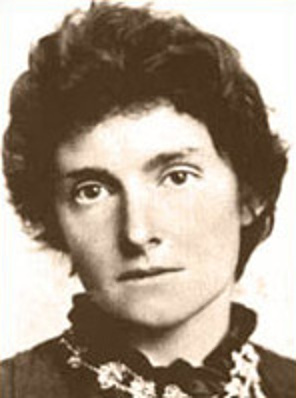Edith Nesbit
, 1858 - 1924
Edith Nesbit was an English poet and novelist and was widely known for her children’s books. She was born in Kennington, Surrey the daughter of an agricultural chemist, John Collis Nesbit who died in 1862 before her fourth birthday. Nesbit spent most of her childhood in France due to the ill-health of her sister Mary. She returned to England after her sister’s death and lived with her mother at Halstead Hall in Kent. The family moved back to Lewisham in South East London when Nesbit was seventeen.
Nesbit married journalist, Hubert Bland in 1880. Their marriage was turbulent as Bland was a philander and their three children shared the home with his illegitimate children as well as one of his mistresses. Nesbit was associated with many writers such as the Rossettis, Swinburne, and William Morris, poet, and social activist and became his follower. Nesbit and her husband became founders of the Fabian Society in 1884 and they jointly edited the Society’s journal Today. In the 1880’s Nesbit, not only lectured but became a prolific writer on socialism. Under the name “Fabian Bland” she collaborated in this writing with her husband but due to the success of her children’s book, this activity was discontinued.
Initially, Nesbit wanted to be a poet and in 1907–1908 she published in the New Age her Pre-Raphaelite influenced verse as well as a volume, Ballads, and Lyrics of Socialism. Her greater success was with her children’s fiction which includes, the three novels about the Bastable family: The Story of the Treasure Seekers (1898), The Wouldbegoods (1901), and The New Treasure Seekers (1904). As well as Five Children and It (1902), The Phoenix and the Carpet (1904), The Railway Children (1905), and the Enchanted Castle (1907). Nesbit not only published forty children’s novels and story collections in her own right but achieved just as many in her collaboration with others.
From 1899 to 1920 Nesbit lived in Well Hall, Eltham, in southeast London. She also had a second home on the Sussex Downs, in the hamlet of Crowlink, Friston, East Sussex. Three years after her husband Hubert Bland died in 1913 Nesbit married Thomas “the Skipper” Tucker who was the captain of the Woolwich Ferry. She moved to “Crowlink” in Friston and then to “The Long Boat” at Jesson, St Mary Bay, New Romney, East Kent where she died in 1924. Nesbit is buried in the churchyard of St Mary in the Marsh.
Sources:
Faye Hammill, Esme Miskimmin, Ashlie Sponenberg, Encyclopedia of British Women's Writing 1900–1950, Palgrave Macmillan, 2006, 174–177;
wikipedia.org (accessed: July 11, 2021).
Bio prepared by Beverley Beddoes-Mills, beverleym@bigpond.com
Records in database:



